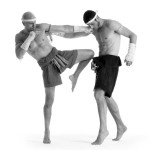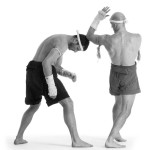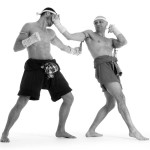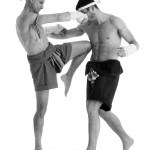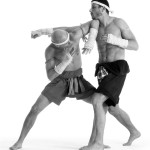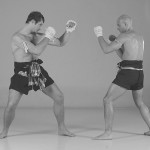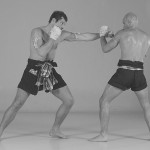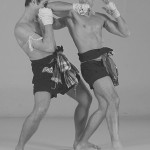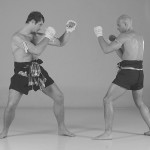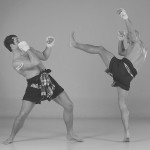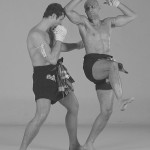Chern Muay
Chern Muay: the hidden treasure of Muay Boran
Chern, เชิง artifice; finesse; maneuver.
According to ancient Siamese traditions Chern Muay techniques represented an optimal system of learning and rationally using the body’s natural weapons to attack and defend.
According to the ancestral Muay Boran’s teaching methods, once the basic systems of using the nine body weapons (Nawarthawooth) are individuated and learned, the Nak Muay should be taught how to employ the 8 main natural weapons, i.e., Awuth Mahd, Awuth Thao, Awuth Kao, Awuth Sok, to develop more complex offensive and defensive actions.
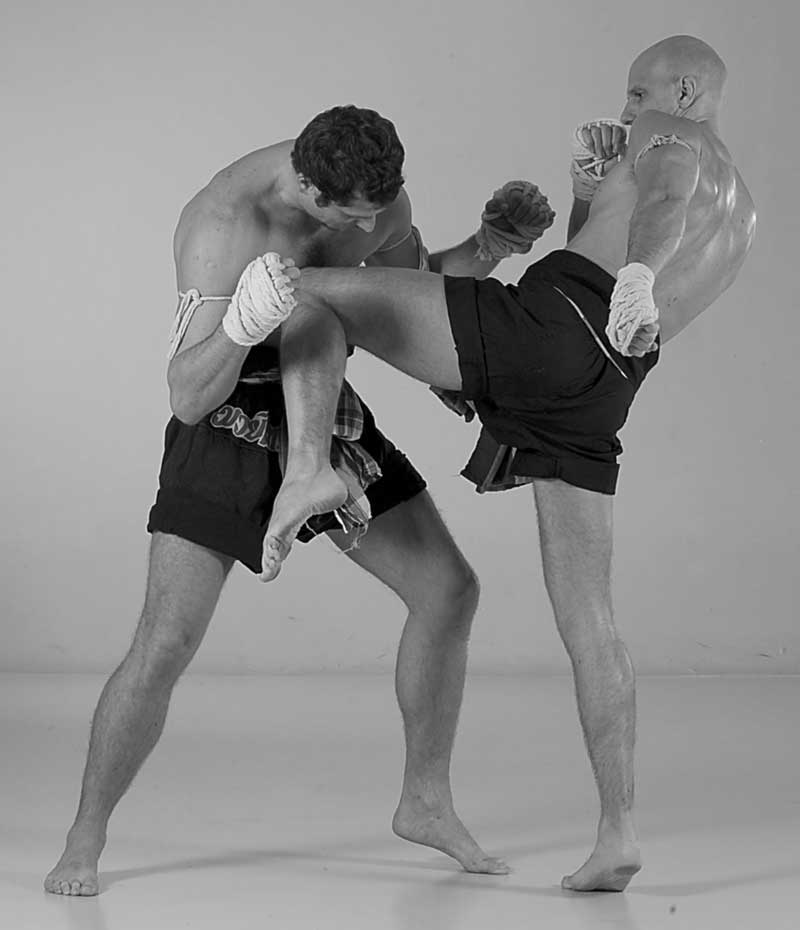 Master Uthai Sinthusan’s textbook dated 1957 is widely recognised as the foremost source of Chern Muay fighting strategies and his classification of these combat skills is still in use in all traditional Muay academies.
Master Uthai Sinthusan’s textbook dated 1957 is widely recognised as the foremost source of Chern Muay fighting strategies and his classification of these combat skills is still in use in all traditional Muay academies.
A fighter who is skilled in Chern Muay techniques is always confident in his weapons’ power: his attitude is mostly offensive. For this reason these fighting principles are often described as “aggressive attacking techniques”. However, a real Chern Muay expert is equally apt at attacking pre-emptively as well as at defending and counterattacking in swift, fluid actions. Chern Muay practitioners sometimes “provoke” their opponents with mock attacks in order to force their enemies to throw their counter: once the opponent is committed to attack the Chern Muay stylist is ready to “counter on a counter” and can more easily terminate the adversary with powerful strikes aimed at his weak points.
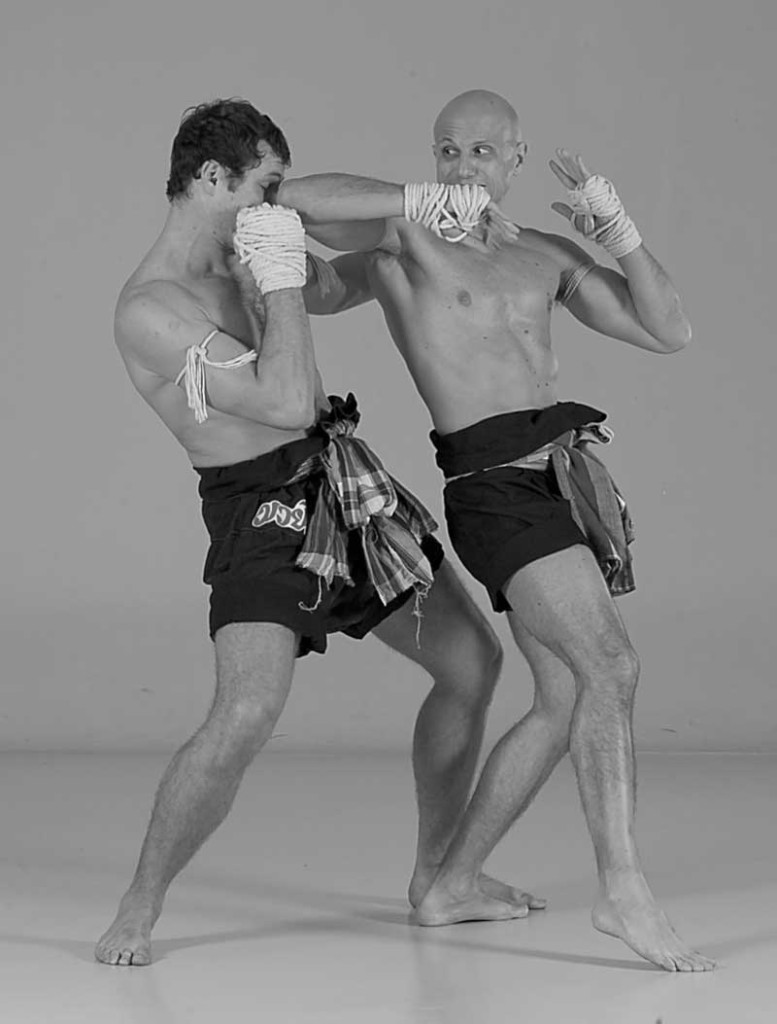
Body weapons may be employed by the Chern Muay stylist in single actions or in multiple attacks: in the latter case, the number of strikes may vary from 2 to 4. In very special cases, an attack may be executed with 2 or 3 body weapons simultaneously: two punches, two elbow strikes, a punch and a knee strike, an elbow and a knee strike, and so on. The rationale of this kind of attacks is double. In the first place, attacking two different targets at the same time makes the defence much harder. Secondly, some vital points are better “stimulated” when another weak area is struck at the same instant.
• Chern Mahd, the techniques of punches
• Chern Thao, the techniques of kicks
• Chern Kao, the techniques of knees
• Chern Sok, the techniques of elbows
Each one of these groups includes a vast array of attacks and counters based on the many possible uses of a single body weapon. Some of these maneuvers may look intricate and difficult to apply in a real fight, at first: however, it must never been forgotten that all Chern Muay are battle tested techniques and it is our duty to unveil the right applications for a given fighting situation. If a Muay Boran technique seems awkward and too difficult to execute, it is not the technique’s fault. The executor may have devoted too little time to learning it and perhaps he just needs more time to rehearse and more effort to be able to effectively apply it in combat. Some Chern Muay are just like that: they seem difficult and sometimes they discourage practitioners. But the more you train the more you’ll start to appreciate the inner beauty of those ancient fighting techniques. Let’s analyse the four groups more in detail.
1. Chern Mahd. The two basic power lines for punches are straight and curve. Round punches can follow a horizontal, upward, downward or spinning path. Moreover, punches can be combined with kicks, knee and elbow strikes to unleash devastating multiple attacks. When used as counters, single or multiple punching techniques can be employed to defend against all kinds of attacks, such as punches, kicks, knees and elbows.
Most of Chern Mahd applications are intended to attack the head: chin, jaw, nose, temples, ears, throat and neck. However, some of these techniques, especially the multiple attacks, can also be aimed at the body: solar plexus, liver and spleen are the main targets.
2. Chern Thao. Kicking techniques follow two main power lines: straight and round. Round kicks can be vertical upward, vertical downward, horizontal, diagonal upward, diagonal downward and spinning. Kick attacks can be single or multiple: multiple kicks combine round and straight kicks or they mix round kicks that follow different paths, such as diagonal upward and spinning.
Some Chern Thao are devised to counter punches while some others are used to counter straight or swing kicks. Kicking techniques are used to attack all kinds of targets from head to calves. The chief points of attack are: jaw, temples, throat, neck, ribcage, solar plexus, liver, spleen, groin, thighs, knees, calves.
3. Chern Kao. Knee attacks belong to two big families: attacks with grabs and attacks without grabs. When you grab and knee, you can catch the opponent’s neck or arms with one or two hands, one or two arms. The main power lines used to deliver knee strikes are: upward, diagonal forward, roundhouse. Some Chern Kao teach how to attack with knees and elbows simultaneously: once properly learned, these short range multiple attacks are devastating and very difficult to defend. Knee strikes are very good counter techniques, usually employed against punches or grabs.
The main targets of Chern Kao are located in the head and body. The chin, jaw, nose, eye sockets, temples are very vulnerable to knee blows. In the trunk, the solar plexus, breastbone, liver, spleen and floating ribs are excellent targets for knee strikes (with or without grabs).
4. Chern Sok. Elbows are the most versatile body weapons included in Chern Muay fighting strategies. Elbow attacks are executed following 9 different energy paths along straight or curved lines. They are short range weapons but they can also be used from a distance with the aid of various jumping and spinning maneuvers. Elbows can be combined with kicks, punches and knees to execute devastating combinations or multiple attacks aimed at different targets simultaneously. For all of these reasons the number of Chern Sok techniques listed by Master Sintusan is superior to any other form of attack (punches, kicks or knee strikes). The best Nak Muay employ elbow strikes as counters against punches or knee strikes. Leading with an elbow blow is a typical beginner’s mistake that expert fighters rarely make. Several Chern Sok techniques are excellent counter moves: most punches, knee strikes and neck grabs can be countered with deadly efficiency using elbows, according to these ancient precepts. Elbows should be aimed at the throat, chin, crown, side of the head (jaw, temples, ears), neck, nape or at the face (to attack the bridge of the nose or upper lip or to cut the skin of the T-zone) for best results: however, the ribcage, the upper arms and upper legs are also possible targets of the “intangible weapon”.
Visit our archive


